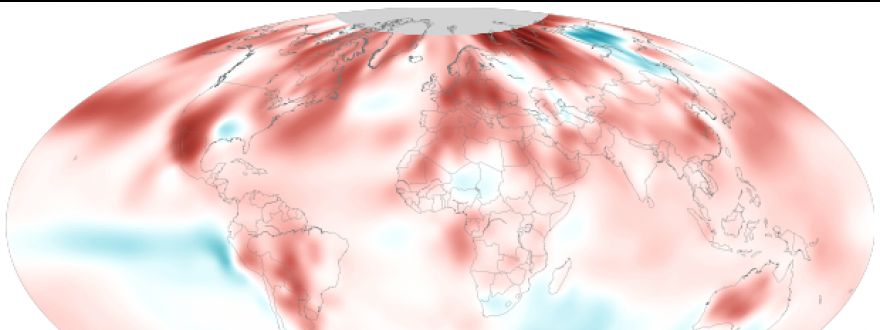
August 2020: The warmest summer on record for the Northern Hemisphere comes to an end
Courtesy of the NOAA, 9/15/2020
The Northern Hemisphere summer ended the way it began, with blistering heat, as summer temperatures across the northern half of the planet were hottest on record, over 2°F above average, according to the latest monthly summary from NOAA’s National Centers for Environmental Information. Across the entire planet, both August and the June–August period were the second hottest on record, continuing a streak of record- or near record-breaking temperatures that has dominated 2020.
August 2020 combined land and ocean surface temperatures were 1.69°F (0.94°C) above average, making the month the second hottest on record for the globe since records began in 1880. Only 2016, the current warmest year on record, had hotter August temperatures. This past August also marked the 44th consecutive August and 428th consecutive month with temperatures above the twentieth-century average. In fact, the five warmest Augusts have all occurred since 2015. Our climate is clearly warming.
To put our current heat into better perspective, let’s jump into a time machine back to August 1998. Back then, global temperatures had just smashed the previous record by 0.2°C. Since that August, eight years have eclipsed that mark, including the last seven years, often by more than the same 0.2°C margin. Temperatures in recent Augusts have made the (at the time) unbelievable temperatures in 1998 look like nothing special.
Diving deeper into the heat patterns in August reveals some particularly noteworthy records. In addition to being the Northern Hemisphere’s hottest August on record, this past month also had the second- warmest ocean surface temperatures in the 141-year record, at nearly 1.5°F above average. This occurred even though a La Niña, with its wide expanse of cooler-than-average ocean temperatures across the tropical Pacific Ocean, was developing.
August and summer precipitation review
Precipitation anomalies tend to vary much more than temperature anomalies due to the often sporadic nature of rain and snow. However, there were some clear precipitation signals in August and during the Northern Hemisphere summer that were particularly noteworthy.
Below-average precipitation anomalies were widespread across the western United States into northern Mexico reflecting a complete failure of the North American Monsoon. The monsoon normally brings much needed moisture to arid parts of the Southwest. But in 2020, the rains simply did not come, exacerbating drought conditions. Overall, the below-average rains across the West were one factor in the proliferation of hundreds of wildfires during the end of August.
For additional information on global temperatures and precipitation in the August 2020 global climate summary, head to the National Centers for Environmental Information.





